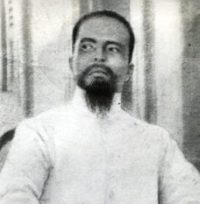Paterno, upon assumption to power, as President of the Council of Secretaries, made the following appointments:
| Felipe Buencamino…………………………. | Foreign Affairs |
| Hugo Ilagan………………………………….. | Finance |
| Severino de las Alas………………………… | Interior |
| Mariano Trias………………………………… | War and Navy |
| Leon Ma. Gerra[1]……………………………… | Agriculture, Industry and Commerce |
| Aguedo Velarde……………………………… | Public Instruction |
| Maximino Paterno…………………………… | Public Works and Communications |
| This was known as the Paterno Cabinet. | |
| The Mabini Cabinet was composed of: | |
| Apolinario Mabini……………………………. | President |
| Mabini………………………………………… | Department of Foreign Affairs |
| Teodro Sandico……………………………… | Department of Interior |
| Mariano Trias (Arcadio del Rosario, acting) | Department of Agriculture |
| Gracio Gonzaga…………………………….. | Department of Fomento |
| Baldomero Aguinaldo………………………. | Department of War and Navy |
| Cruz Herrera (acting)……………………….. | Department of Public Instruction |
The Foreign Affairs portfolio was given to Cayetano Arellano, who, however, did not assume office after taking his oath.
Once the Paterno Cabinet was established, peace negotiations were considered based on a proposal of autonomy patterned after Canada’s. In fact, he gathered in San Isidro, Nueva Ecija, Generals Luna, [Pio del] Pilar, and other chiefs to deliberate on the idea. Buencamino read a well-reasoned proposition; but it was taken by those present with reserve. The officers left for their posts, the majority of whom reserved their opinions.
The American advance, arrested in Calumpit, finally broke the line by attacking Quingua, then Pulilan, from which point they penetrated Calumpit suffering many casualties. They continued advancing to Apalit, Santo Tomas, and San Fernando, where they stationed themselves for a few months. Since the capture of Calumpit, the Filipinos fortified Bambang and established the capital of the Republic at Tarlac.
It must have been May 9 when Congress was convened at San Isidro, resulting in the resignation of the entire Mabini Cabinet. Once the “unreasonable” person was out of power, the conservatives spread the news everywhere that peace had been declared. It even reached the mountains, and was a powerful reason for those taking refuge in the environs of Biyak-na-bató to return to their homes. Numerous families went back to the towns believing that very soon peace would be a reality.
I went to Malolos after I left Polo. Then I accompanied the family of Mariano de Santos to Baliuag and San Miguel de Mayumo. When the latter was captured by the Americans, we took to the sitio of Balaong[2] near Biyak-na-bató. We had two houses here for two large families. We had to provide thirty-three cavans of palay or more and some sacks of salt for a year’s supply.
We moved into the houses. The family of Nazario Constantino was joined by his brother-in-law, Santos de Castro of Polo with his three sons, his cousin Teresa, and the family of Lucio Ongsiaco; and that of Santos was joined by the mother-in-law of Nano[3] with her companions. The two houses were full.
With the capture of San Miguel, fearing that the Americans might conduct an inspection, we spent the night in the Tañganan cave. The next day, about midafternoon, we returned to the house and found the other members of the household preparing to return to their respective homes, as news of peace were being circulated all around from mouth to mouth. During the night, all our belongings were placed in the carts that had arrived from San Rafael.
The next day, May 15, all of us, riding on the fifteen carts, were on our way to San Rafael.
Major Soriano and I should have stayed behind; but we believed it to be our duty to take them as far as the environs of said town. It must have been about 5 o’clock in the afternoon when we saw the town proper from afar, but we had to pass through the populous barrio of Caiñgan towards which we were riding. Soriano and I should have returned by now; but at the insistence of the young girls who invited us to dine with them, we accompanied them to the barrio about 7 in the evening.
[1]Leon Ma. Guerrero.
[2]Balaon.
[3]Mariano de los Santos.
